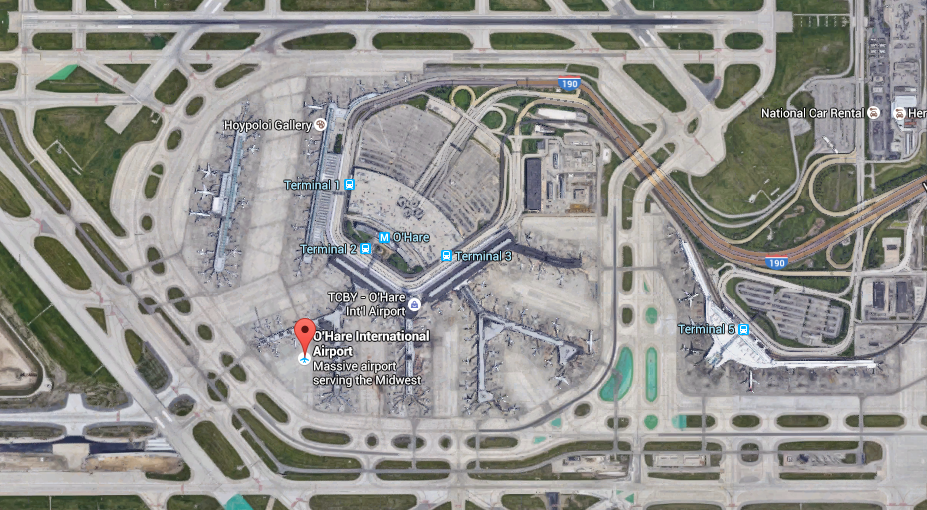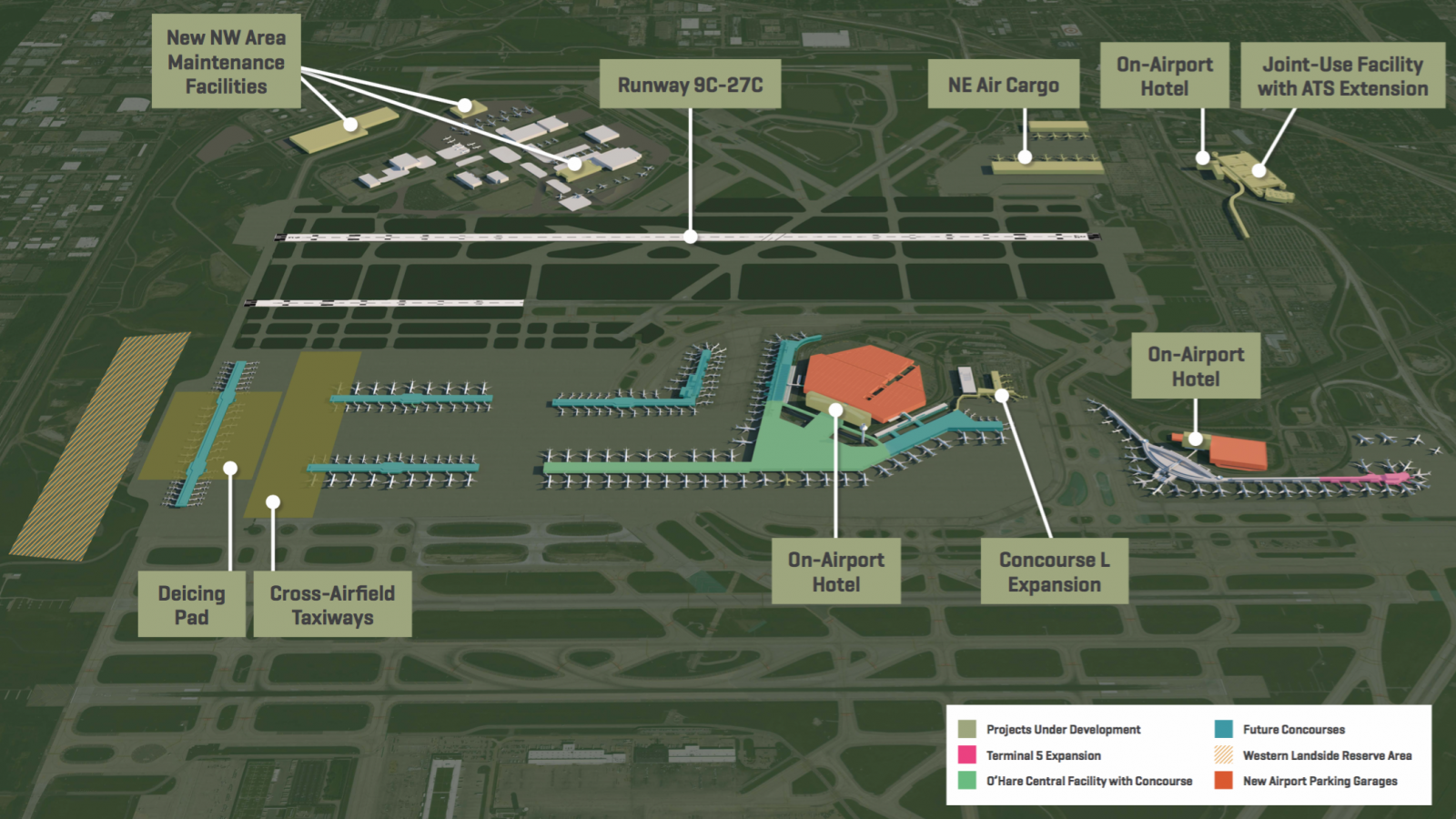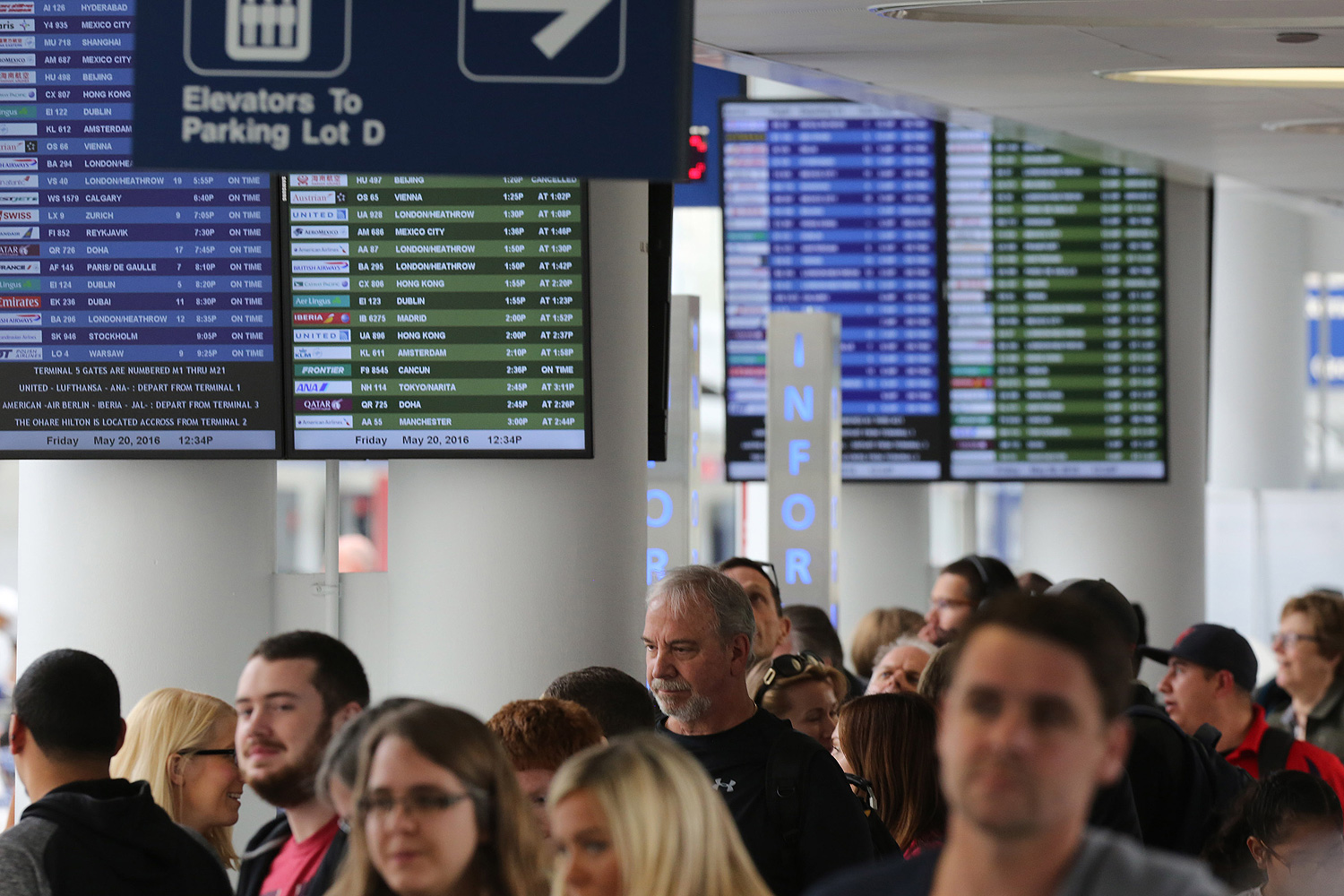Flying in and out of O'Hare during my 15 years in Chicago, almost exclusively back home to rural Virginia, I flew on a lot of pond-jumpers through second-tier hubs, often carrying my luggage out to the tarmac. I didn't mind; it felt kind of retro, and it just seemed like the way things were, as transportation always does.
That stopped happening, though I didn't notice. More recently I've been on bigger planes flying out of gates, though the change didn't occur to me until I got interested in the recently, suddenly announced O'Hare gate expansion—at least nine new gates, perhaps many more—and called DePaul's Joseph Schweiterman to talk me through it. Much as I'm interested in transportation in Chicago, from bike-share to bus rapid transit, I realized that I didn't understand the supply and demand behind what's going to be a multi-billion-dollar, years-long project that took years of complex negotiation in order to begin.
"To simplify, really from about 2005 to about 3 years ago, the thinking was that they didn't need that many new gates, because airlines are increasingly using regional jets, these little jets that you can park anywhere, and people just walk on the tarmac," Schweiterman says. "Traffic was down after 9/11. From 2006 to 2014, the thinking was you didn't need gates. Traffic was down, you had little planes, fuel prices were way up.
"It's a paradox. You'd think that little planes would mean more gates. No—regional jets, especially those little 70-seaters, you just walk out on the tarmac and bring your suitcase with you. That relieved some pressure, because they could just park planes all around the tarmac, including up against the terminal building at Terminal 2. There's no gate there, they just pull them up, and people would walk. It's a little tricky, because you have to get them in and out of there, but that was one of the issues."
Now, we're dealing with a different set of issues, he explains: "Now the number of passengers is growing again, and airlines are using fewer of the really small planes, [so] people want jetways."
Small planes allowed airlines to run a substantial number of flights with a minimum of wasted seats during down years for the industry, but they're more expensive on a per-seat basis because of scale. The paucity of space and sometimes nerve-wracking flights were also unpopular with customers. Two years ago, Meribah Knight reported for Crain's that the use of 50-seat jets had increased over the prior decade, but the trend had shifted, with United to follow the new trend Schweiterman describes. "O'Hare relies more heavily on the 50-seaters than other large airports," Knight wrote—more than twice the volume of Atlanta's massive hub.
New runways were supposed to help boost capacity, but instead they mostly garnered attention for the noise they've created (so much so that we dispatched Rod O'Connor to survive a night in one of the most-affected houses).
The results were something of a letdown: "Some people said we spent so much money, it should double the [capacity] with all these billions you're spending, but it appears to be a 30 to 40 percent boost in traffic," Schweiterman says. From late 2013 through early 2015, delays actually worsened. "There also were problems such as too many planes and not enough available gates," the AP reported.
The first set of gates would be rapidly rolled by tacking them on to the end of Terminal 5, the mostly international terminal set aside from the main part of the airport. A more ambitious, far-off, and still hypothetical plan would involve a tear-down and rebuild of Terminal 2, as Hal Dardick and Mary Wisniewski reported in the Tribune.
"In the bigger scheme of things, the whole configuration of Terminal 2 and 3 is kind of a problem, because they're kind of these U-shaped bays, so it's tricky getting in and out, because there's not much clearance on either side, and it adds a minute or two here and there. Now there are too few gates, so the whole thing's kind of a mess," Schweiterman says.
You can see what Schweiterman is talking about in an aerial photo of the airport versus the rendering the city made for its new plans.

In the current configuration, you can see the limited access (and increased density) due to the V-shaped branches of Terminals 2 and 3 coming off the central hexagon of O'Hare. The (very preliminary) rendering takes an entirely different approach.

"O'Hare, when it was built, was really pathbreaking. It was one of the first to have separate levels for arrivals and departures on the road side. It was built at the time when really long piers were the way airports were done," Schweiterman says. "Then in the '60s, the early '70s … they started to build islands, where you'd take an underground train or walkway. Now that's the standard way to do it. It's better because planes can go all the way around those islands. It's more geometrically efficient."
But a new Terminal 2 is not a sure thing. Crain's Joe Cahill praised the mayor for just getting United and American to talk about the last step of the runway expansion, because increased capacity doesn't necessarily benefit them. The two airlines dominate the airport, and more gates could mean more competition. Furthermore, expansions are paid for in large part out of user fees—in short, the two Goliaths subsidizing the Davids. Modernizations at other major airports, and the increased fees that go along with them, mean that now is a good time for O'Hare to follow along in the wake. But Schweiterman agrees that getting United and American to the terminal, if not yet on board, is an achievement.
"The amazing thing is that they had to get American and United to agree to this. That was quite a feat, because they pushed back on O'Hare modernization in pretty dramatic ways. It came along eventually, but it was always intrigue behind the scene," he says. "So I suspect Terminal 2 is so conceptual that it's easy to agree to it. What'll make it hard is when they say, OK, we're going to do this, everybody's fees are going to go up, that might be where the rubber hits the road."



